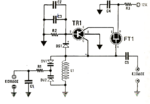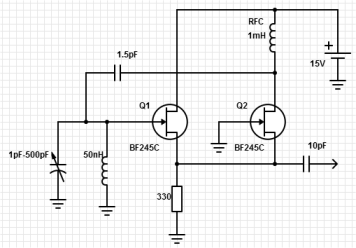neazoi
Advanced Member level 6
Hello, I have found this ultra wideband oscillator circuit in an old Greek magazine. It claims to operate from 0.5-450MHz and it never stops oscillating as long as it is powered by 3-15v vcc. The only component to be changed is the band-switching coil L1.
I would like to know how this circuit works if anyone has any clue.
There is some kind of feedback that allows the fet to regulate power to the transistor but I cannot find out how does it work.
Also DC should flow through L1 to GND which does not make sense for me.
I would like to know how this circuit works if anyone has any clue.
There is some kind of feedback that allows the fet to regulate power to the transistor but I cannot find out how does it work.
Also DC should flow through L1 to GND which does not make sense for me.
Attachments
Last edited:

